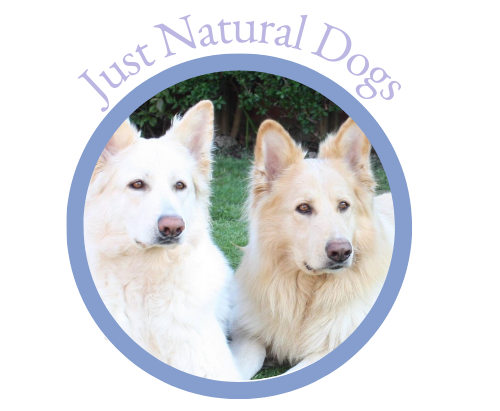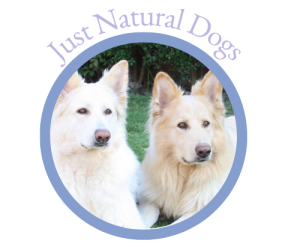Feeding Raw
So, you have decided to feed Your Pet Raw?
What do you need to know?
WHAT SHOULD I BE FEEDING? WHAT IS GOOD TO FEED AND WHAT IS NOT?
So, you have decided to feed your pet a raw diet (BARF – biologically appropriate raw feeding). But it appears to be a minefield of rights and wrongs. Your right way will take a bit of time, effort and trial and error. Remember every pet is different and what suits yours may not suit another. Just like humans they have likes and dislikes. This information is to help you to determine what is a healthy, balanced diet for your pet. But, please remember these are guidelines and may need a tweak here and there to suit your pet.

Where to begin…
Once you start researching the best diet for your pet you will see phrases like ‘complete’ ‘balanced’ or ’80/10/10′. You may wonder what these mean.
Complete – this is a perceived industry standard. Guidelines have been produced to which all manufacturers should work to, incorporating the 80/10/10 (80% meat, 10% bone and 10% offal) remember 80-10-10 is a basic guide line and is not always the right balance for your Pet, always read the label, every manufacturer has their own take on this and some products may not contain what you expect (no bone or no offal). Whilst this isn’t a problem if you are aware of it, it is something to watch out for. You can balance over time using other products that do or do not, contain bone or offal.
Balanced – again this is a perceived industry standard. One size doesn’t fit all in this case.
80/10/10 – This is the standard, but may not be the right balance for your Pet. 80% protein (muscle meat), 10% bone and 10% offal of which only 5% should be liver. Other offal such as kidney or spleen should make up the other 5%.
What foods are suitable….
Here we would like to give a brief overview of what is considered suitable foods. It is not an exhaustive list but the basics. We will explain why these are needed in a balanced diet.
PROTEIN: (Muscle building – Amino acids – Real food for the carnivore) FEED THESE RAW. Cooked meat is alien to the dog’s digestive system!
RAW GREEN TRIPE: Probably the finest of the protein foods. Try to obtain a quality supply.
CHICKEN: Wings, carcass, necks or meat.
LAMB: Meat or neck.
BEEF: Any cut is fine. Try to avoid the large weight bearing leg bones – these aren’t great for teeth as they are so hard.
TURKEY: Carcass; necks; meat.
OFFAL: Liver (only 5% of your calculated offal amount) Kidney. Spleen, testicles are also a good alternative offal.
HEART / PLUCK: These are muscle meats too. Heart and small amount of lights / pluck (lungs) (often found in cheaper pet food minces as ‘bulk’ i.e., economy pet minces.) These are cheap but can also be very rich so try to avoid feeding these for the whole meal.
FISH: Oily fish; herring/mackerel etc; white fish.
EGGS: Ideally raw to preserve the biotin content. These can be feed whole with the shell or without.
BONES: You cannot get away from the fact that dogs are primarily carnivores and carnivores eat bones. Bones are a food and packed with nutrition. Dogs have eaten them with very little harm since forever! That was what they were created for – they cleared up all the carcasses and lots of other things – literally, the dog is a scavenger.
Where better for a dog to get totally natural, easily assimilated, top quality calcium! They form an important part of a balanced diet and also are great for sparkly white teeth.
VEGETABLES: These are purely optional. (But highly recommended by Just Natural Dogs) Some do, some don’t. They can be useful for bulking out a meal if your pet needs to lose a few pounds. But if you choose not to feed or your dog isn’t keen then don’t worry you will still be achieving a balanced diet if you feed the items above.
Give vegetables with a Protein meal. You can give them finely grated raw, or pulped. Or you can cook them – or use the leftover veg from your Sunday Roast. Many manufacturers will include them in their completes also. Or for an extra special treat pour bone broth over them, by all means ask for our recipe. Vegetables should not be more than 25% of your dogs meal.
SPROUTED GRAINS/SEEDS (i.e., pumpkin/sunflower/alfalfa/ or use beansprouts) Only need to let them just sprout, about 12 to 18 hours should see it right. Trouble is, it’s another bother to do it. If using seeds, you can also grind them, instead of sprouting.
FRUIT: Yes, fruit. Give bananas, an excellent source of potassium and long-term energy. Remember the sugar content though. Also, some dogs with skin problems can have an issue with the sugars in fruit and veg and this might make them sore and itchy. Feed occasionally as a treat and not as an integral part of the diet.
Apples, (No Core) you can grate at first for a pup, and is often best that way for all dogs, as they tend to get more from it. You can find that if they have eaten a whole apple, it comes out the back end in un-broken-down chunks. If they have a really strong digestive system, they will break more of it down.
Kiwis are good – full of vitamin C.
Oranges; dogs love them as long as you get them used to them early on in life. Again, great vitamin C.
SUPPLEMENTS: Again, if you are feeding a good balanced diet, these are a preference rather than a necessity. Seaweed (Kelp). Is a brilliant vitamin and mineral source. Turmeric – a great natural anti inflammatory. Kefir, coconut oil – the list goes on. Please research feeding guidelines and introduce gradually, as with all new foods.
Current feeding guidelines suggest that for a balanced diet you should be offering a good variety of meats (Minimum of 4 per week). Variety is the spice of life – your dog will thank you for having something new each day rather than having the same protein and becoming bored.
FEEDING YOUR PET AS NATURE INTENDED
Have you been put off by your vet or headlines implying that your own health may be at risk, let alone that of your pet? Well read on…
Some of the immediate benefits seen within 2 weeks of Raw feeding
Look at the shine…… Shiny coat, good muscle tone, bright eyes
So, are you scared that you might be at risk from Salmonella or some other bacteria that you can’t pronounce? Your vet has told you that your dog won’t be getting the essential nutrients he needs for strong bones and his teeth won’t be clean if he doesn’t eat kibble? Looking at this in greater detail may help.
Bacteria and You
If you eat meat yourself, we assume that you prepare raw meat in your home. Basic hygiene precautions should always apply, whether the food is for you, or for your pet. Wash everything in hot soapy water (or a dishwasher) and wash your hands before and after preparing raw meat. It really is as simple as that. Whilst us humans cook our food to kill bacteria, your pet’s stomach has different acidity levels to enable them to deal with higher levels of bacteria. Remember your dog picks up all sorts in the street whilst on a walk and has no ill effects. If we did the same, we would probably be quite ill. We aren’t the same.
Raw vs Kibble
Biologically appropriate raw feeding. Is just that, as nature intended our pets to eat. They have never had the ability to cook their own food. so why feed them cooked food? Kibble, like all long-life foods, contain preservatives and additives to make it more appealing and last longer on the shelf. These are an unnecessary addition to your pet’s diet.
Raw and Your Vet
Why is my vet against raw? Well firstly, not all vets are against raw. Vets tend not to spend too much time on nutrition whilst learning their trade. They are approached by kibble companies to stock their products and the profits are very good. There is also occasionally a place for kibble due to allergies or other illnesses. But raw is as nature intended.
- Supermarket Meat or Raw Pet Food Supplier?
Supermarket Meat or Raw Pet Food Supplier?
Have you ever wondered why plain supermarket meat is not recommended for feeding to your pet? Do you think that raw pet food manufacturers are just inflating their prices for the same product you can buy in the supermarket? Well, this isn’t the case……..
Meat purchased from your local supermarket just isn’t the same. Meat is meat I hear you say…
Well, yes, it is but the meat you buy from your supermarket is produced for us humans to cook. Therefore, it is not batch tested for bacteria. So, the consumer (your pet) is risking levels of bacteria which would ultimately fail batch tests should it have been intended for raw pet food.
All raw pet food manufacturers have to adhere to strict Defra batch testing for all products produced. This is because you feed in its raw, uncooked state to your pet. Whilst your pet’s digestive system can tolerate far greater levels of bacteria than us humans there is still a chance of picking up something nasty from supermarket bought meat. If you are caught short or have run low of your usual food, go to a pet shop freezer not the supermarket.
This is just one reason why you should buy from a reputable raw retailer.

